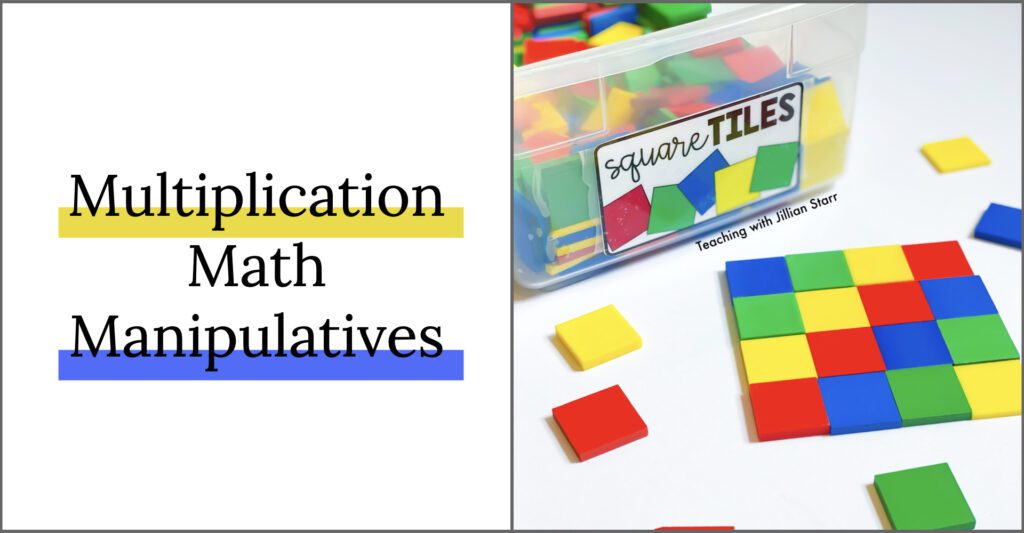
Not all multiplication math manipulatives are created equal. Why? Because multiplication is a complex concept to construct. And as teachers of multiplication, we know that multiplication math manipulatives are most helpful when they can demonstrate the variety of approaches, uses, and strategies for tackling multiplication.
Over the years, I’ve tried what feels like 100 different multiplication math manipulatives. My saga of trying to pare down my multiplication math manipulative collection felt a little like Goldilocks. This one is too specific. Then, this one is just pretty. And, finally, this one is just right.
Finding those just right multiplication math manipulatives took a lot of trial and error. Now, I look for three qualities before I introduce new multiplication math manipulatives.
What Makes a Just-Right Multiplication Math Manipulative?
- Range: Can be used for a variety of different strategies and approaches to a problem.
- Flexibility: Must be flexible enough to demonstrate multiple ways of thinking about a multiplication problem and demonstrate more than one function or strategy of multiplication.
- Function: They are pretty with a purpose.
Hitting all three qualities is pretty rare. I aim to introduce multiplication math manipulatives that hit at least two.
It can be hard to judge multiplication math manipulatives before purchasing. But friend, I’ve kissed the frogs, so you don’t have to! Or, in other words, I’ve done trial-and-error testing so you can get right to using the good stuff.
Today, I’m introducing you to my three favorite multiplication math manipulatives. Of course, there are more wonderful multiplication math manipulatives. But if you’re trying to keep it simple or just getting started, these three will hit all of your multiplication needs.
You can click on any link below for an Amazon affiliate link. If you happen to order a book from the link provided, I earn a small percentage of that sale, which goes towards the maintenance of my blog.
Square Tiles
Teaching multiplication is eye-opening. As a child, multiplication seemed rigid, and there was only one way to do it. But the truth is that multiplication can take many different forms and be achieved through endless strategies.
To name a few forms, multiplication shapeshifts into:
- Skip counting
- Repeated addition
- Jumps on a number line
- Equal groups
- Arrays
Enter: Square tiles. Square Tiles are the most uncomplicated and most flexible multiplication math manipulative available.
Square Tiles are plastic or foam 1-inch squares. They come packaged in large quantities, often in four or more colors. While there are many uses for Square Tiles as a multiplication math manipulative, I encourage students to use them to explore multiplication as equal groups and arrays.
Multiplication as Equal Groups
I look for the most basic, no-frills manipulative to support student construction of multiplication as equal groups. Square tiles are precisely that. They are counters.
I introduce a new concept or strategy in guided groups. With my small group, I ask each student to choose a tile color (they will stick with that color). Then, I ask students to make X groups of X tiles.
After a few rounds, I ask them to make those groups on a plain sheet of paper. Students circle their groups and draw the tiles in those circles. Then, they write the equation.
Students tend to learn this activity quickly, making it a seamless transition into independent practice with the use of an activity sheet with equations.
Multiplication as Arrays
When learning about arrays, Square Tiles are the first multiplication math manipulative available. Their application is simple. According to the equation, you create a certain number of equal rows. For example, 3 x 5 would translate into three rows of five.
The introduction of multiplication math manipulatives always begins with direct instruction. We begin by using Square Tiles in guided math groups. I ask students to make X number of rows of X tiles. After building the array, I ask students to write a number sentence. This simple yet engaging activity can be continued and practiced independently with a simple graphic organizer.
When we start using Square Tiles, I ask students to practice making arrays by fact family (2s, 5s, 3s, etc.). However, the simplicity and range of square tiles mean that students can quickly level up if they need more of a challenge. I love to use 10-sided dice to have more random number options as they become more familiar with the activity.
Legos
That’s right. Your students have been exploring multiplication through Legos for years! Legos check off all the boxes of what makes excellent multiplication math manipulative.
I use them in two ways:
- Identifying natural arrays
- Building arrays
Natural Arrays
Legos are natural arrays. As kids build with legos, they constantly familiarize themselves with array patterns and analyze arrays to fit pieces together. Because of this, I like to start with a whole group introduction. I open with a statement such as “You are have exploring arrays for a long time now.” Warning: When I reveal Legos in math class, the kids go wild!
We start by looking at their natural array patterns. I ask students to grab a handful of Legos and describe the number of equal rows. I encourage one-to-one counting or mental addition at the very beginning. Some students will start by counting, and others are so familiar with legos that they instantly know each shape’s array. After, I ask students to draw their Lego arrays and describe using the multiplication equation.
Next, I ask students to do the same thing in their journals. Looking at Legos’ natural array patterns is an excellent way for students to self-differentiate. Students who are more experienced in multiplication and arrays will often choose larger Lego rectangles. There is a range of arrays from which to choose.
Building Arrays
After identifying natural arrays, it is time to build our own. The tricky part about building arrays using Legos is that students a used to building, but not in arrays. Believe it or not, most students haven’t been concerned with making equal rows.
You might be wondering: How do you connect Legos in rows?
Instead of rows, students build in columns. They build X number of Legos in a column, create X number of equal columns, and then attach it to a Lego base. In the end, the Legos are in rows and columns– A beautiful, hand-crafted array!
Omnifix Cubes
If you’ve been following me for a while, you might be familiar with my love of Unifix Cubes. Now, get ready for your socks to be knocked right off!
When I started teaching multiplication, I quickly realized that I needed a multiplication math manipulative to demonstrate the operation’s physical and dynamic qualities.
Omnifix cubes take the benefits of Legos and Square Tiles, merge them, and kick things up a notch! Have you ever heard of this life-changing multiplication math manipulative? Think Unifix cubes with even more possibilities.
Omnifix cubes are squares that connect on all sides. The cubes click into each other via rotating connectors, allowing the builder to build on multiple axes. The builder can also physically move the creation. They can twist it and turn it to present and demonstrate the idea they are modeling.
Omnifix cubes are like Unifix cubes, but they can attach on the sides, not just the top. This multidimensional quality makes them ideal for making arrays.
But the magic of Omnifix cubes doesn’t stop with arrays. Omnifix cubes also demonstrate the three-dimensional aspect of multiplications. Students can create multiple layers of arrays, building the Omnifix cubes into 3D cubes. That is simply impossible with Square Tiles.
Note: Omnifix cubes hit all three qualities that I look for in a multiplication math manipulative. However, their functional purpose is essential to emphasize and keep in mind as students explore multiplication concepts. Omnifix cubes become a toy without direct instruction.
Curious to learn more about how to put these multiplication math manipulatives into practice? I’m here to help. Please reach out if you have any questions. I’d also love to hear about any other excellent multiplication math manipulative finds!

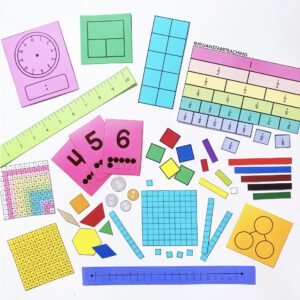

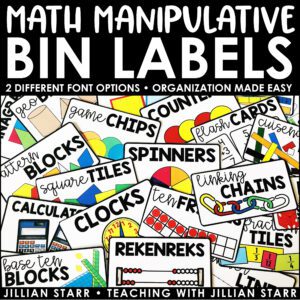

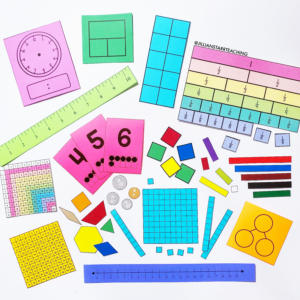
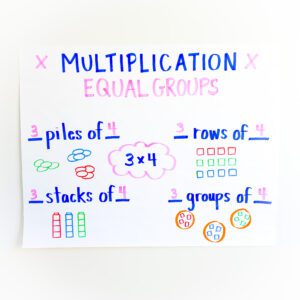
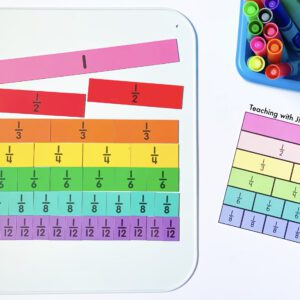



Leave a Comment